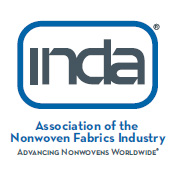
 Doug Hinchliffe
Doug Hinchliffe
Research Molecular Biologist, Southern Regional Research Center (SRRC), ARS-USDA
Doug Hinchliffe is a Research Molecular Biologist with the USDA in the Cotton Chemistry and Utilization Research Unit located in New Orleans, LA, and is Lead Scientist on a project titled "Cotton-based Nonwovens." Some of Dr. Hinchliffe's personal research interests include elucidating the molecular and genetic bases for unique quantitative and qualitative fiber traits of diverse cotton varieties for development and utilization in specific nonwoven textiles applications.
Thursday 9:00 am - 10:30 am
Industrial Wipes - Food Service, Formulations & Federal Agencies
Quat Co-formulations Optimized For Use With Cotton Nonwoven Disposable Wipes
Quaternary ammonium compounds, commonly referred to as quats, are cationic surfactants widely used as the active biocidal ingredient for disposable disinfecting wipes. The cationic nature of quats results in a strong ionic interaction and adsorption onto wipes materials that have an anionic surface charge, such as cellulosic materials including cotton, thereby reducing the amount of quat deposited onto a hard surface for effective disinfection. The degree of adsorption of quats onto cotton nonwovens is affected by pretreatment of the substrate, more specifically whether it is a greige or a scoured and bleached fabric. Adsorption of quats onto cellulosic substrates was previously examined and it was determined that the majority of quat depletion onto the cellulosic substrate occurs within the first 24 hours in solution and then reaches equilibrium. Greige cotton and rayon exhibited the greatest quat depletion from solution at ~38%. The lowest quat depletion levels were observed with scoured and bleached cotton and bleached pulp which depleted ~10% of quats from solution. Using response surface methodology (RSM), an optimized disinfecting solution was developed that minimized quat adsorption onto cellulosic substrates by screening the ionic interaction between the quat and the substrate surface. Optimized co-formulations consisted of the quat alkyl-dimethyl-benzyl-ammonium chloride (ADBAC), electrolytes, nonionic surfactants, and low molecular weight quats. Here we report the results of efficacy testing on optimized quat co-formulations with 100% greige cotton substrates that included passing Good Laboratory Practice (GLP) level testing against methicillin-resistant Staphylococcus aureus (MRSA).










